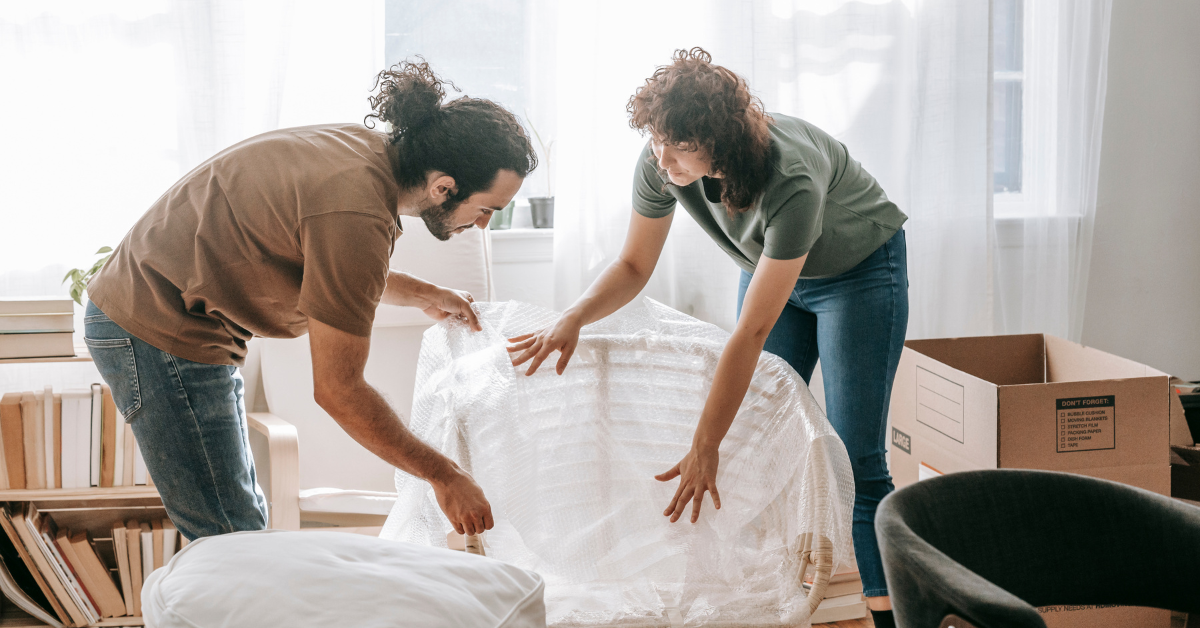
How Removalists Can Help You Pack Like a Pro

*Collaborative Post
If you’re planning to relocate anytime soon, you’re probably thinking of ways to make the move slightly less overwhelming. It’s actually quite common for people to juggle multiple tasks during the moving stage. But knowing you’re not alone doesn’t make the challenge any easier.
One of the most time-consuming aspects of a move is packing your furniture and belongings. From deciding which items to bring along with you to categorise them into the right boxes, there’s a lot of decision-making involved in the packing process. And we’re not even talking about the physical aspects of it yet!
As tiresome as it is to pack your things in anticipation of a move, it’s more than possible to pack your things like the pros. By following these techniques and strategies, you can pack your items and ensure that you’ll smoothly transition to your new space without a problem.
Let’s dive into the ways you can pack like how the professional removalists do it!
1. Gather High-Quality Packing Supplies
Before you start packing, you should round up all the things you need to ensure that your belongings will all be safe and secure during transit.
Having the right packing materials and supplies ensures that your items won’t collapse under their own weight while being hauled around. It also helps provide peace of mind by providing better organisation and increased protection for your items—making unloading a much easier task.
Essential materials to have on hand include the following:
- Multiple sturdy, double-walled cartons (you can buy these boxes yourself or ask grocery/retail/hardware shops if they have any spares they’re willing to give away)
- Bubble wrap
- Duct tape
- Foam peanuts (or crumpled paper)
- Packing paper
- Towels
- Post-it notes and markers
- Stench wrap
These supplies serve a variety of purposes to make moving items of varying sizes a much easier task. Furthermore, items such as foam peanuts, bubble wrap, and packing paper provide ample protection—ensuring that your fragile items won’t accidentally break while in transit.
In most cases, you’ll already have a bulk of these items at home. Towels are something you can use to wrap the hard interior shell of boxes and minimise the force of impact, for instance. But if you don’t have these on hand, consider buying them in hardware stores or various retailers.
If you suspect that your home supplies can’t hold up to the rigours of the move, then don’t be afraid to scrap it in favour of new and more durable material. Old cardboard boxes can lose their structural integrity, making them prone to collapsing. They may also be exposed to heat and moisture over time, weakening them in the process.
As such, it’s essential to invest in proper supplies instead of relying on old, worn-down products. This way, you can have peace of mind knowing that your items are properly contained within a quality box.
If you don’t want to go through the hoops of securing materials yourself, you may consider partnering up with interstate removalists to help facilitate the packing process as well. That said, if you want to streamline things on moving day, then packing stuff yourself is the best call.
2. Organise Your Boxes
Another great strategy when packing is organising your boxes before transit.
Professional removalists often work with multiple clients. This means that they’ll deal with different materials and be told a different set of instructions per project. This can be a dizzying affair for removalists, especially if they don’t have a proper system in place.
The solution that some removalists have come up with is quite ingenious—and that’s organising and labelling the boxes of their clients. Professional removalists group boxes by room or category—like Kitchen, Bedroom, or Fragile—and use colour-coded labels to keep track of everything they need to relocate.
On top of that, many removalist companies also log the boxes and items within these boxes in an inventory list to keep track of the flow of the items. This provides structure in the loading and unloading process, making unpacking feel more efficient and less like a confusing mess.
The best part? This strategy can easily be adopted by individuals who are moving into a new space. In fact, it’s more advantageous if you do it yourself, as the unloading process for your personal stuff (like items in your bedroom) will mostly be facilitated by you at the end of the day.
Proper organisation also has additional perks. For one, it can signal to you and your removalists on whether to handle a package with extra care (For a box marked “Fragile) or if something needs two or more people to move the box (For a box marked “Heavy”).
In any case, organising your boxes can help keep your items safe and transported efficiently. This can reduce the feeling of overwhelm and anxiety that comes naturally with the moving process.
3. Secure Fragile Items
Another crucial pro tip when packing your belongings is keeping fragile items in a separate box from everything else.
Fragile goods like glassware, electronics, antiques, and trophies can easily break with the slightest bit of force or movement. If your items are anything less than tightly and properly packed, this can make them highly vulnerable to damage.
Opening a box and seeing shards of glass or a dented appliance is definitely not the start you’d want when you’re unloading your belongings in the new place. Thankfully, there are ways you can mitigate the risk of your fragile items getting crushed or smashed under the constant motion in transit.
The first thing to do is to separate all fragile items and put them in a categorised cardboard box (i.g. Fragile kitchen goods, electronic appliances etc.).
Spreading out all your fragile goods in one box can slow the mover’s productivity. Having just one or a few boxes of fragile items, on the other hand, makes it much easier for you or your removalists to focus their efforts on handling and transporting them carefully.
To pack your fragile goods, start by ensuring that the box is properly cushioned. Use a towel and tape to soften the edges. Wrap your fragile goods with bubble wrap and packing papers. And finally, throw in some foam peanuts to fill gaps and keep items from shifting and bumping into each other.
If you have dividers, then you can consider using them to completely separate glassware and plates. Once you’re done packing the box, label the box as “FRAGILE” and “THIS SIDE UP” on multiple sides. If you have a “FRAGILE” sticker, paste it on the visible side of the box.
By consolidating fragile goods, you can reduce the chance of breakages and make unpacking an easier experience in your new space.
4. Disassemble Large Pieces of Furniture
Another way to make packing easier is by disassembling large pieces of furniture. Some furniture like tables and shelves can be disassembled with the right tools. Consider removing the parts that take up space like legs, frames, and bulky panels to make the whole set easier to put in a box and bring around.
Furthermore, some furniture pieces may not be small enough to enter narrow doors and hallways. If it’s possible, then disassembling them is the only way to bring them into your new home.
Once you’ve disassembled your furniture, ensure that you know how to put them back together and store the pieces inside a dedicated parts box. Be sure to also wrap these parts in protective wraps like blankets or towels to ensure they don’t get damaged or scratched.
Moreover, refrain from mixing multiple furniture parts in one box. This makes reassembly at your new place easier and more efficient.
5. Maximise Space and Consider Weight
Lastly, removalists also follow an accident-minimising technique when they pack boxes, and that’s sorting items by weight. Professional removalists stack and arrange items in a way that maximises the space within the box and reduces “dead air”. This helps stabilise the box and makes it less likely to shift around because of a weight imbalance.
Furthermore, removalists also tend to put heavier items below and lighter items on top. This practice ensures that the boxes are properly balanced whenever they’re settled on the truck. It also ensures that lighter items won’t get crushed under the weight of heavier and bulkier items during sudden movements, such as speed humps.
By following these techniques, you’ll not only get to pack more efficiently and protect your belongings. You’ll also reduce the costs associated with the move due to improved space optimisation and safer practices.
We hope these tips will help you out in your next packing endeavour. All the best!
*This is a collaborative post. For further information please refer to my disclosure page.




